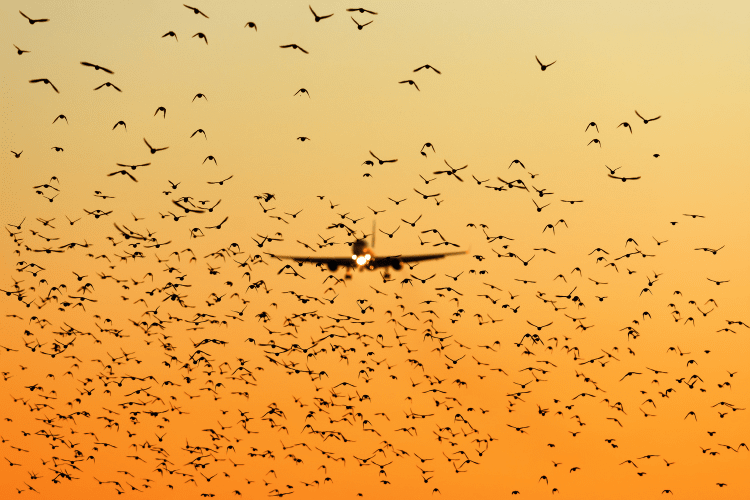Bird strikes present a serious risk to the aviation industry and can cause major damage, even to large aircraft and airliners. In this blog, we’ll look at three key factors that are contributing to the ongoing rise of this threat.
How Common Are Bird Strikes?
More incidents of birds striking planes are being reported than ever. According to the FAA, in 2018, 16,235 civilian flights in the USA were affected, more than 45 per day. In 2023, the number rose to 19,400 reports, more than 53 per day.
3 Reasons Bird Strikes are On The Rise
1. Wildlife Populations are Expanding
Conservation efforts have drastically improved in recent years. As a result, there has been a significant increase in populations of large birds, including geese and eagles. For instance, the goose population of Canada has increased 4.5-fold from 1.26 million in 1970 to 5.69 million in 2012.
“We’ve cleaned up the environment, gotten rid of DDT, enacted the Clean Water Act,” explained Dr. Richard A. Dolbeer, a retired ornithologist with the USDA (Department of Agriculture). “All good things, but because of these, we’ve had incredible surges of many species that are hazardous to aviation.”
At the same time, these birds have begun adapting to urban environments. They’ve grown more comfortable being around habitation. When you’ve got greater numbers of large birds spending more time around urban areas such as airports, the risk of bird strikes inevitably goes up.

2. Modern Aircraft are Quieter
While bird populations have been on the rise, modern aircraft have become much quieter and quicker. Most of today’s aircraft are fitted with turbofan jet engines, which create much less noise compared to previous models. There are clearly many benefits to this, such as reducing urban noise pollution. But it also makes planes more difficult for birds to detect and avoid, resulting in more collisions.
Size plays a role as well. Faster, wider-bodied aircraft are struck more frequently than older, narrow-body jets. As planes have become larger, birds have had to fly further to avert a collision.

3. The COVID-19 Effect
The COVID-19 pandemic has changed animal behaviour across the globe. With national lockdowns leaving the normally bustling streets and city centres largely empty, local wildlife has taken the opportunity to run amok. We’ve seen deer grazing on the front lawns of London housing estates and herds of buffalo on empty highways in New Delhi.
Birds have been no different. The pandemic has reduced activity at airports, which are often surrounded by large areas of green, farm land, or water. This already makes them attractive to migratory birds, and the reduced activity creates the perfect opportunity for waterfowls, gulls and other large birds to move closer to the runway for breeding, roosting, and wintering.
However, while airports might be quieter, they haven’t shut down completely. And when traffic starts picking up again, the threat of increased bird activity so close to flight space will become more apparent.
Bird Strikes are More Common. Prevent Them at Your Airport
Bird strikes pose a safety risk to aircraft and passengers and increasingly also have a financial impact on airports. They have been blamed for more than 106 civilian deaths worldwide over the past two decades, and cause about $1.2 billion a year in damage.
With the risk of bird strikes increasing, it’s important to have total awareness of what’s going on in your air operations area. That’s why advanced bird detection radars have become an essential tool for airports across the world.
These systems detect and track birds in real-time, 24/7, across your entire airport. They provide the data and insight needed to respond to threats faster, prevent liability issues, and inform effective wildlife hazard management policies.